UNESCO World Heritage Sites in India
India's UNESCO World Heritage Sites stand as a testament to the nation's rich cultural and historical legacy. In this article, we will embark on a journey to discover the iconic UNESCO-designated treasures that showcase India's diverse heritage. From magnificent architectural wonders to awe-inspiring natural landscapes, these sites have earned global recognition and protection under the United Nations Educational, Scientific and Cultural Organization (UNESCO). Let's delve into the enchanting world of India's World Heritage Sites.
List of 42 UNESCO World Heritage Sites in India
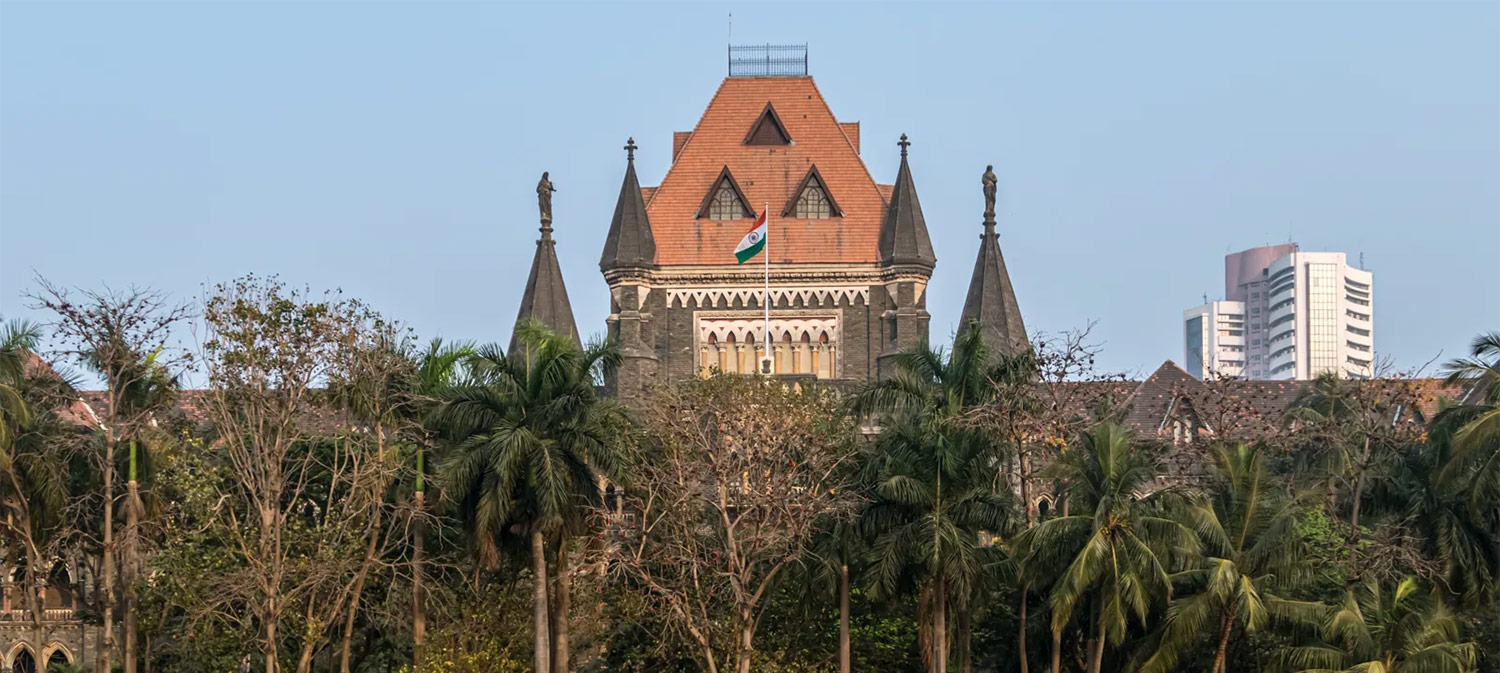
1. The Victorian and Art Deco Ensemble of Mumbai: Preserving the Heritage of a Bygone Era
Welcome to the enthralling journey through the historical and artistic gem known as The Victorian and Art Deco Ensemble of Mumbai. This prestigious site, honored as a UNESCO World Heritage Site, is a testament to the glorious bygone era when Mumbai was known as Bombay. In this article, we will delve into the captivating history, architectural marvels, and the conservation efforts surrounding this ensemble.
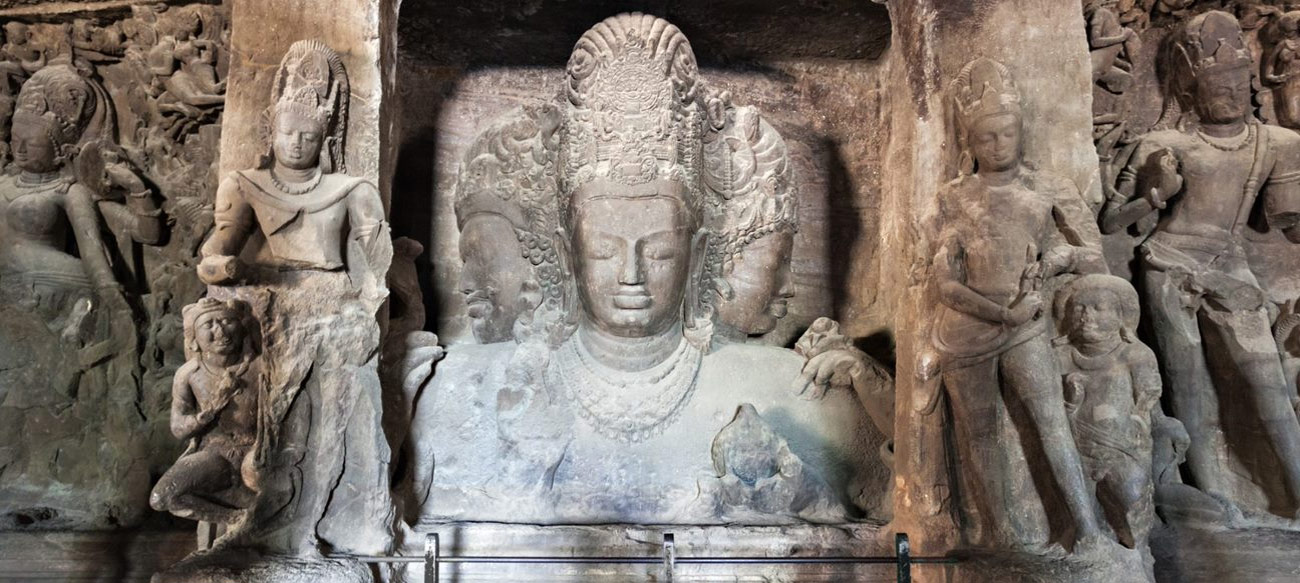
2.Elephanta Caves: Spiritual Abode
Elephanta is a cave temple shrine hewn out of solid rock in the eighth century. It is situated on an island, about an hour's motorboat ride away from Bombay. It was probably intended as a private place of worship for the Rashtrakuta kings. Its exact date of construction will remain unknown because the Portuguese destroyed the plaque that bore details of its history when they plundered the island in the sixteenth century. They named the island Elephant after the large stone elephant that once guarded it. Elephanta is famous for its Siva temple, with images of unsurpassed beauty-Ravan shaking Mt. Kailash, the marriage of Shiva and Parvati and the Trimurti. n which Shiva embodies the roles of Creator, Preserver, and Destroyer.

3. Ellora Caves: Fusion of Faiths
The finest examples of cave architecture are to be seen at Ellora, the ancient Elapur. There are over 100 caves, of which 34 are significant. The Buddhist caves date to between AD 600 and AD 800, the Hindu caves between AD 600 and AD 900 and the jam caves between AD 800 and AD 1100. The truly magnificent caves are the Vishwakarma, the Kailashnath and the Indrasabha. These temples were literally carved out of the solid rock face of a high cliff. Over 200,000 tons of stone were removed to create the Kailashnath, the supreme masterpiece, which took over a century to complete. Ellora was the capital of the Rashtrakuta kings and was probably a place of pilgrimage long before the temples were excavated. It lay at the juncture of two important trade routes.

4. Ajanta Caves: Ancient Rock-Cut Artistry
The well-preserved Ajanta murals and frescoes remain unmatched in the world of art. The 30 Buddhist caves, which contain these murals and frescoes, were excavated by Buddhist monks from the side of a horseshoe-shaped ravine between 200 BC and AD 650. The caves lay deserted and forgotten for centuries until they were rediscovered by British army officers in 1819. Of these caves, five were prayer halls and twenty-five were monasteries. The murals in Caves I and 2, created from mineral colors, belong to the Gupta period (AD 320 to AD 650), known as the golden age of Indian art. The murals depict episodes from the life of the Buddha and from the Jataka tales. It is believed that at its prime, some 200 Buddhist monks lived in Ajanta

5. Chhatrapati Shivaji Railway Station: An Architectural Marvel
Modeled on the lines of the St. Pancras Station in London, Victoria Terminus is undoubtedly the Raj's piece de resistance, complete with carved stone friezes, stained glass windows and flying buttresses. It is an outstanding example of Victorian Gothic Revival architecture in India, blended with Indian traditional architecture. The building, designed by the British architect F.W Stevens, became the symbol of Bombay as the 'Gothic City' and the major international mercantile port of India. The station was christened to commemorate Victoria Jubilee Day in 1887 when India's first steam engine puffed out to neighboring Thane, about 45 km away. The terminal was built over ten years starting in 1878. Its remarkable stone dome, turrets, pointed arches, and eccentric ground plan are close to traditional Indian palace architecture. It is Gothic architecture at its best, an awesome edifice that most citizens view with deep pride.

6. Taj Mahal: Epitome of Love
Shah Jahan also built the Taj Mahal, a tomb for his beloved wife Mumtaz Mahal. Raised between 1631 and 1648, this chaste marble mausoleum has remained one of the most awe-inspiring architectural achievements of all time. It is grand and understated, opulent and elegant; its scale and proportions rest in perfect equipoise. Its architect changed the dynamics of the traditional Islamic garden tomb by setting this tomb at the far end, instead of the center of the garden. An average of 10,000 people visit the Taj Mahal each day; during the peak season, the numbers rise fourfold. Those who return disappointed must be few and far between.

7. Agra Fort: A Timeless Fortification Steeped in History
The red sandstone fort in Agra was raised by the Mughal Emperor Akbar (r.1 556- 1605) on the banks of the River Jamuna. The well-preserved red sandstone walls of the fort, and the imposing gateways reflect the robust style of architecture that characterized the reign of Akbar. Within the fort, it is possible to trace the development and refinement of Mughal architecture over the course of a century. Akbar's son, Jehangir, incorporated the use of marble in his palace, the Jehangir Mahal. Jehangir's son, Shah Jahan was passionate about architecture. He created elegant marble structures, inlaid with precious and semi-precious stones. Some of these-the Diwan-i-Khas, the Chameli Burj, the Pearl Mosque and the Khas Mahal are within the Agra Fort.
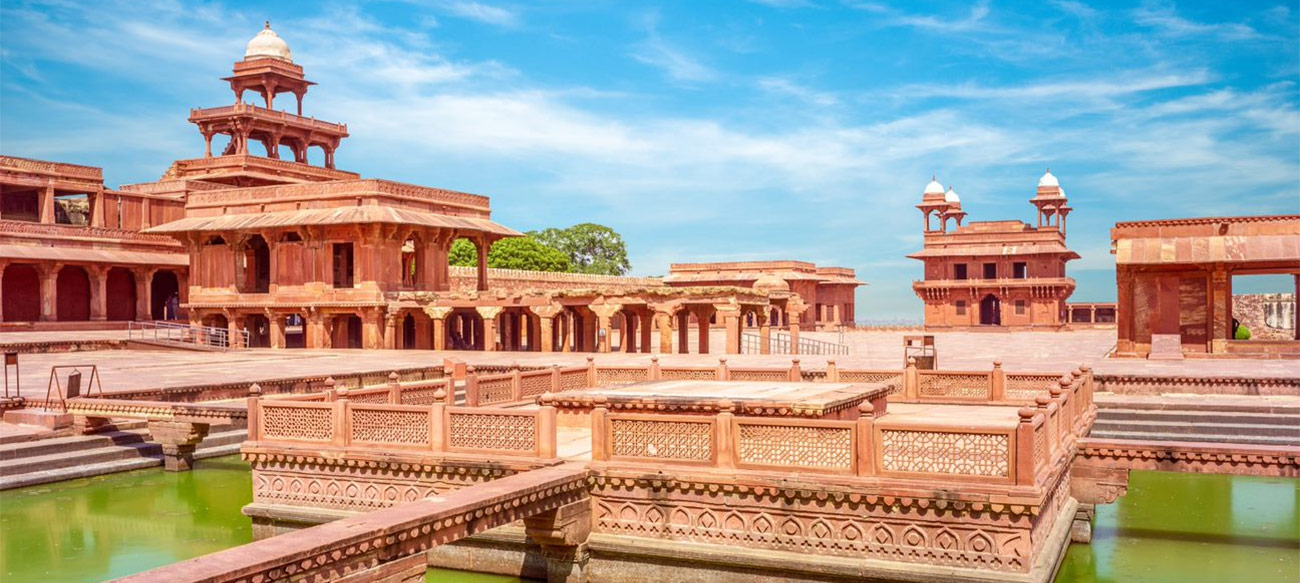
8. Fatehpur Sikri: Exploring the Architectural Marvel of India
This City of Victory was Akbar's capital for approximately fifteen years. Here, he experimented with architectural forms and is known to have personally supervised the construction. The red sandstone palaces are extraordinarily well preserved after more than four centuries. The finest monuments are the Diwan-i-Khas and Diwan-i-Am, the Panch Mahal, the Treasury, the queens' palaces, and a short distance away, the Jama Masjid with its towering Buland Darwaza. The Sufi saint, Salim Chishti lies buried in the courtyard of the Jama Masjid and his wish-fulfilling shrine draws thousands of devotees throughout the year.

9. Buddhist Monuments at Sanchi: A Journey to Serenity
The Buddhist Monuments located in Sanchi, Madhya Pradesh are a World Heritage Site. In 1989, these monuments have been listed among UNESCO World heritage sites of India. The Great Stupa at Sanchi, is one of the oldest stone structures in India, which was originally commissioned by King Ashoka the great of the Maurya empire in the 3rd century BCE. It is located 46 km north-east of Bhopal. Sanchi is the center of a region with a number of stupas, all are situated within a few miles of Sanchi including Satdhara, Bhojpur, Andher, Sonari, Bharhut.
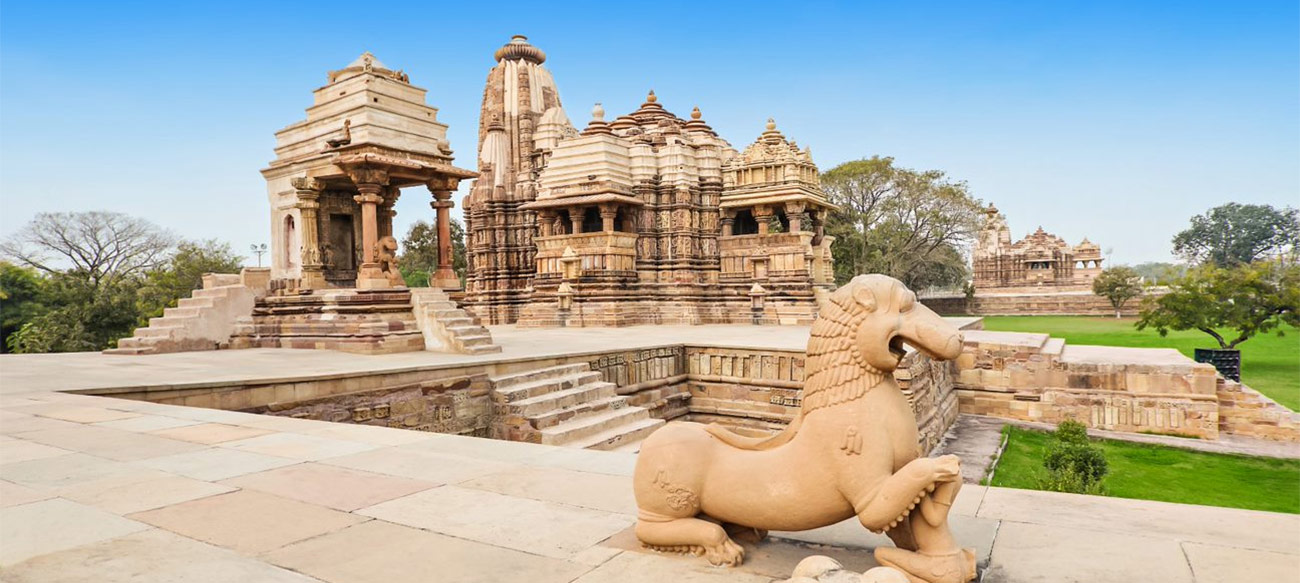
10. Khajuraho Group of Monuments
Legend has it that a thousand years ago, the lovely young daughter of a Brahmin priest was seduced by the Moon God, and of their union was born Chandravarman, the founder of the Chandela dynasty: The Chandelas built 85 temples at Khajuraho in the short span of a century, between AD 950 and 1050. Only 25 of these temples remain, but they are architectural masterpieces. While the temples have been much publicized for their erotic sculpture alone, the sculpted panels are in fact an exuberant celebration of life in all its moods and forms. The Kandariya Mahadev is the most renowned of all the temples.
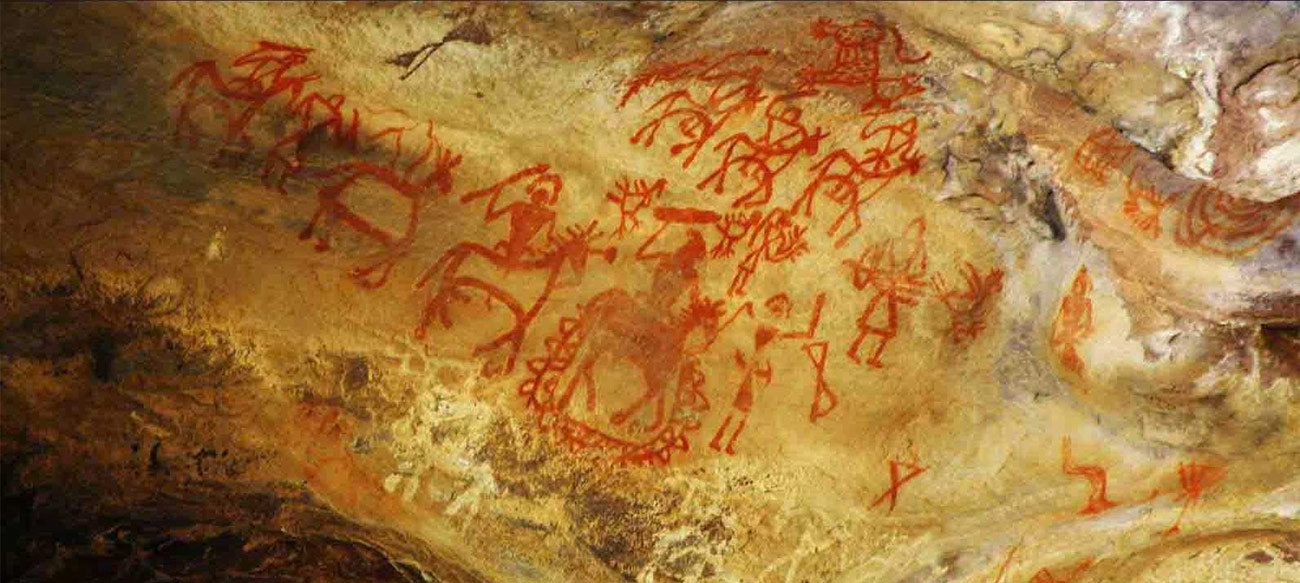
11. Rock Shelters at Bhimbhetka
This City of Victory was Akbar's capital for approximately fifteen years. Here, he experimented with architectural forms and is known to have personally supervised the construction. The red sandstone palaces are extraordinarily well preserved after more than four centuries. The finest monuments are the Diwan-i-Khas and Diwan-i-Am, the Panch Mahal, the Treasury, the queens' palaces, and a short distance away, the Jama Masjid with its towering Buland Darwaza. The Sufi saint, Salim Chishti lies buried in the courtyard of the Jama Masjid and his wish-fulfilling shrine draws thousands of devotees throughout the year.
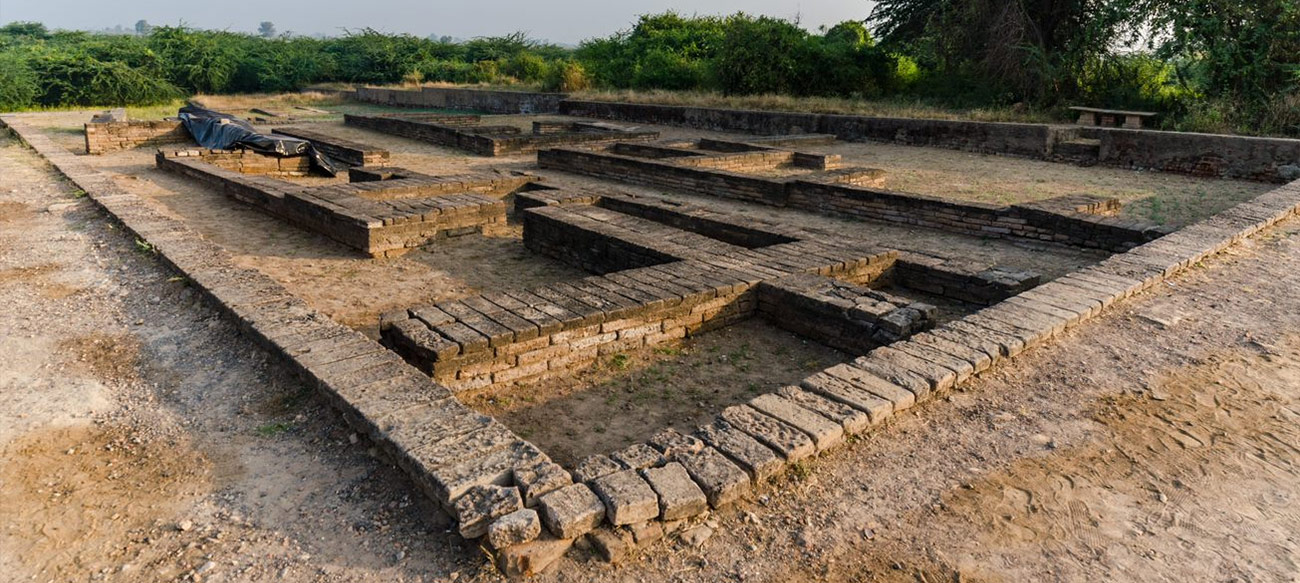
12. Dholavira: A Harappan City
The ancient city of Dholavira is one of the most remarkable and well-preserved urban settlements in South Asia dating from the 3rd to mid-2nd millennium BCE (Before Common Era). Discovered in 1968, the site is set apart by its unique characteristics, such as its water management system, multi-layered defensive mechanisms, extensive use of stone in construction and special burial structures. Of note is also the art associated with the city – artefacts of various kinds such as copper, shell, stone, jewellery of semi-precious stones, terracotta, gold, ivory have been found at the site. In addition, the interregional trade links associated with Dholavira, have also been acknowledged as contributing to the shared heritage of humanity.
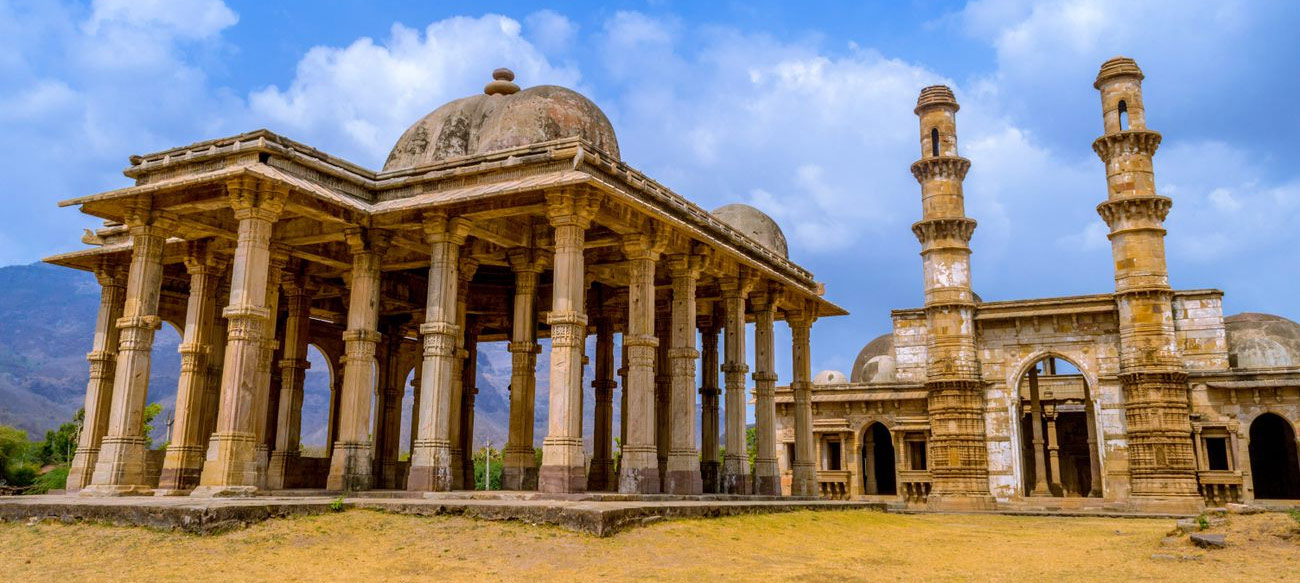
13. Champaner-Pavagadh Archaeological Park
Welcome to the enthralling world of Champaner-Pavagadh Archaeological Park, where history, architecture, and nature converge to create an unforgettable experience. Nestled in the Indian state of Gujarat, this UNESCO World Heritage Site boasts a remarkable collection of archaeological treasures, including palaces, mosques, temples, and step wells, all set against a stunning backdrop of Pavagadh hill. As you embark on this virtual journey through time, we will walk you through the captivating stories behind the ruins, the grandeur of the architecture, and the mesmerizing landscapes that have made Champaner-Pavagadh Archaeological Park a top destination for history enthusiasts, architecture aficionados, and nature lovers alike.
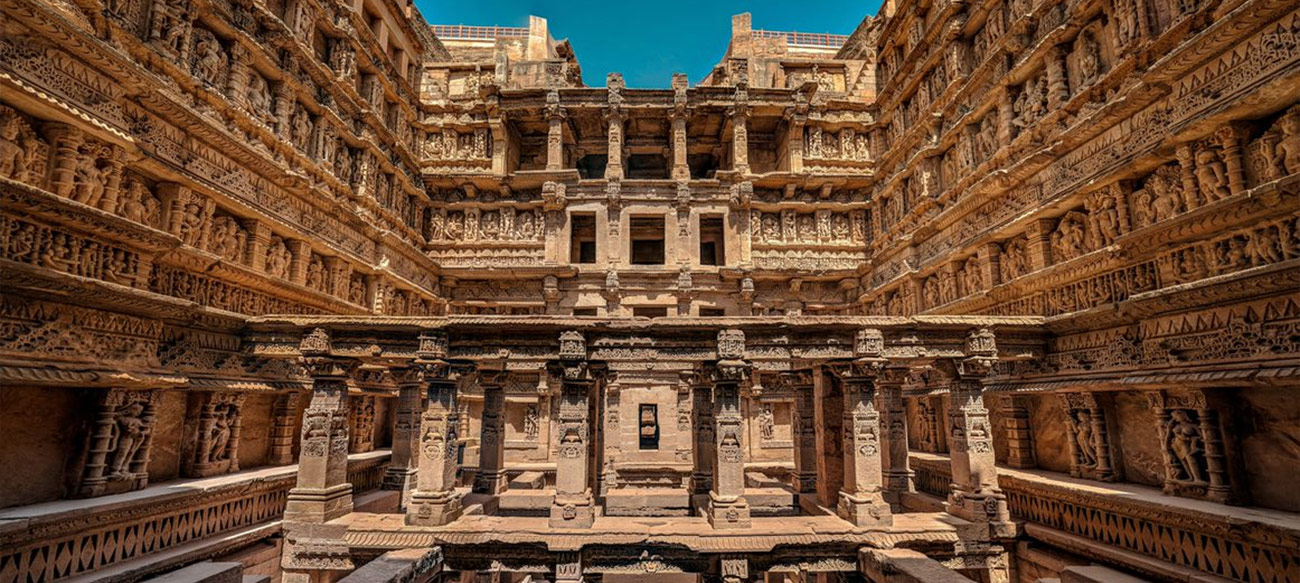
14. Rani-ki-Vav Patan, Gujarat
Rani-ki-vav is situated in the town of Patan in Gujarat. It was constructed in the 3rd millennium BC located on the banks of Saraswati River. Rani ki vav was built as a memorial to an 11th-century king Bhima I. It was added to the list of UNESCO'S World Heritage Sites on 22 June 2014. Rani-ki-vav is well known for its Sculptures, Stone Carvings and Stepped Corridors in the Well. Most of the sculptures are devoted to Lord Vishnu in the form of his 10 avatars (incarnation).

15. Churches and Convents of Goa
The Churches and Convents of Goa are a UNESCO World Heritage Site located in the state of Goa, India. This site encompasses the significant religious and architectural heritage left behind by the Portuguese colonial presence in the region.
Goa was a prominent Portuguese settlement from the early 16th century until 1961, when it was annexed by India. During this period, the Portuguese built numerous churches and convents, showcasing a unique blend of European and Indian architectural styles.

16. Kakatiya Rudreshwara (Ramappa)
In the southern part of India, nestled amidst the picturesque landscape of Telangana, stands a remarkable testament to the architectural brilliance of ancient India - the Kakatiya Rudreshwara, popularly known as the Ramappa Temple. This awe-inspiring temple, dating back to the 13th century, showcases the finest examples of Kakatiya architecture, drawing history enthusiasts and tourists from all around the world. Let's embark on a journey through time to explore the captivating beauty and historical significance of this magnificent structure.
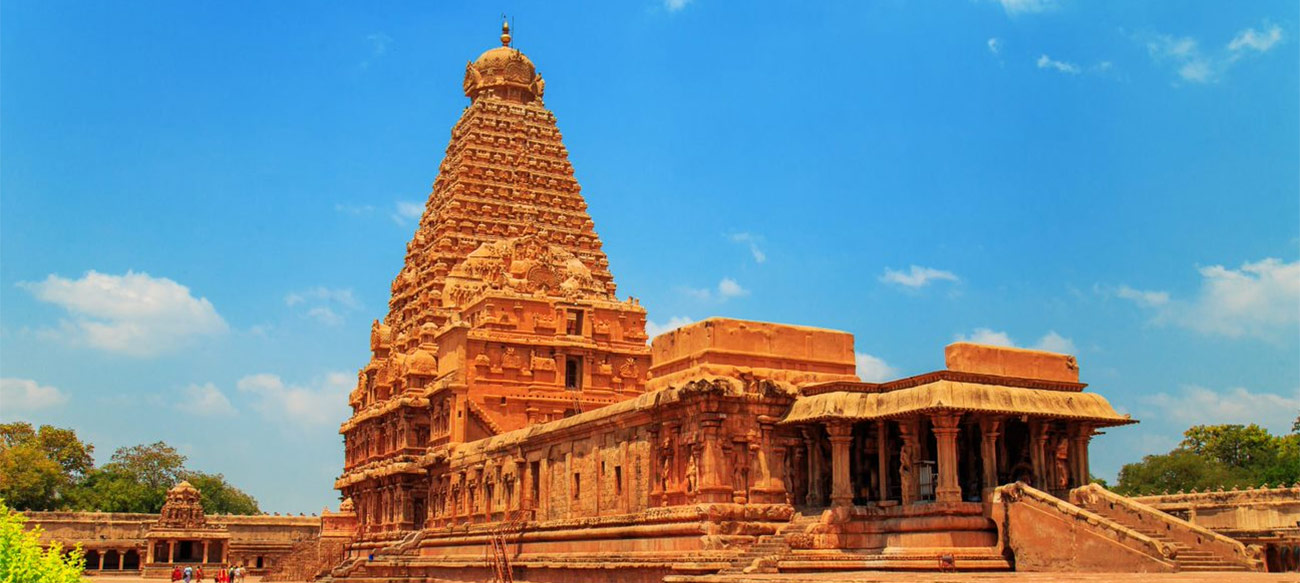
17. Great Living Chola Temples
The Great Living Chola Temples is a group of Hindu temples of the Chola dynasty built between early 11th and the 12th century CE in the Indian state of Tamil Nadu. The monuments include the Brihadisvara Temple at Thanjavur, the Airavatesvara Temple at Darasuram, and the Temple of Gangaikonda Cholapuram. These temples are living temples and the rituals and festivities which were followed by people thousands of years ago, are still there even today. These three famous temples are mirror of the ancient culture and heritage of the Tamilians.
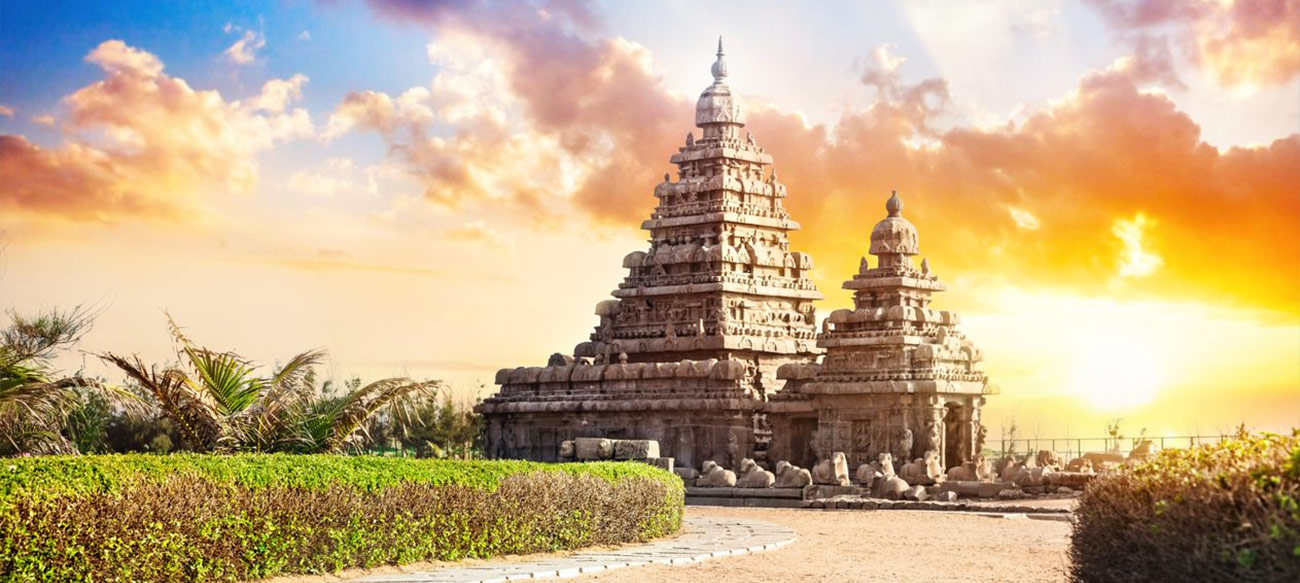
18. Group of Monuments at Mahabalipuram
The Group of Monuments at Mahabalipuram, also known as Mamallapuram, is a UNESCO World Heritage Site located in the state of Tamil Nadu, India. This historic site is renowned for its intricate rock-cut architecture and intricate carvings, which showcase the artistic brilliance and craftsmanship of ancient India. Let's delve deeper into the captivating history, architectural significance, and the enduring allure of this mesmerizing site.
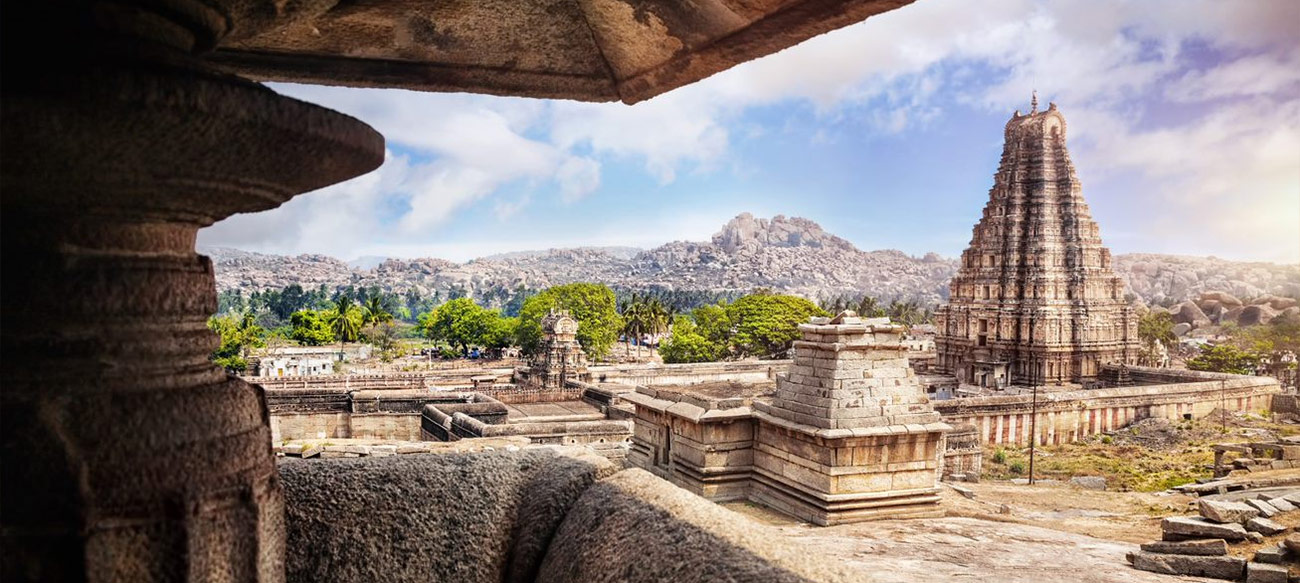
19. Group of Monuments at Hampi
Hampi is one of the most magnificent ruined cities in the world. The impact of the wild and beautiful landscape through which the River Tungabhadra flows is as powerful as the ruins. Hampi was the capital of the medieval Vijaynagara Kingdom, but the history of this site dates back to the time of the Ramayana. Krishnadevaraya was the greatest ruler of the Vijayanagara kingdom. Travelers from Russia, Persia and Portugal, and Italy visited Hampi and wrote of its unparalleled splendours. The city was destroyed in 1565 by the combined forces of the Deccani Sultans. The ruins are spread over 26 square kilometers, with the main ones situated on the right bank of the Tungabhadra. The important monuments include the Vitthala and Hazara Rama temples, Mahanavami Dibba, the Lotus Mahal, and the Virupaksha Temple.

20. Group of Monuments at Pattadakal
Pattadakal, 30 kilometers from Badami, is situated on the banks of the Malaprabha River. The numbers of temples indicate that this was obviously a place of great importance. Experts say this is where the Chalukyan emperors were crowned. They were the patrons of these temples, some of which, like the Sangameshvar Temple (AD 750), can be dated. The Virupaksha Temple was built to commemorate the victorious expedition to the Pallava capital of Kanchi. The temple has exceptionally beautiful sculptures, a Nandi Mandapa, and an impressive courtyard. The Chalukyan sensitivity to space and form becomes apparent when the site is viewed from across the river.
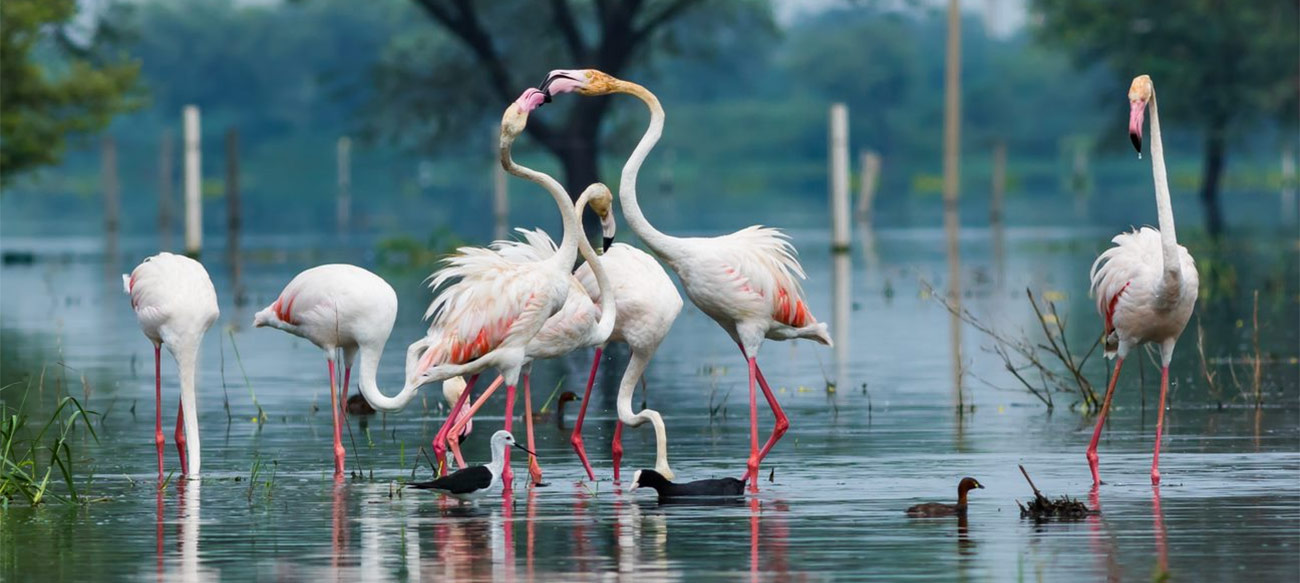
21. Keoladeo National Park
Keoladeo National Park, formerly known as Bharatpur Bird Sanctuary, is a magnificent wildlife sanctuary situated in the Bharatpur district of Rajasthan, India. This man-made wetland ecosystem is a UNESCO World Heritage Site and is renowned for its rich avifauna. Covering an area of approximately 29 square kilometers, the park attracts thousands of birdwatchers, nature enthusiasts, and photographers from across the globe. In this article, we will explore the fascinating world of Keoladeo National Park and understand why it is truly a paradise for bird lovers.
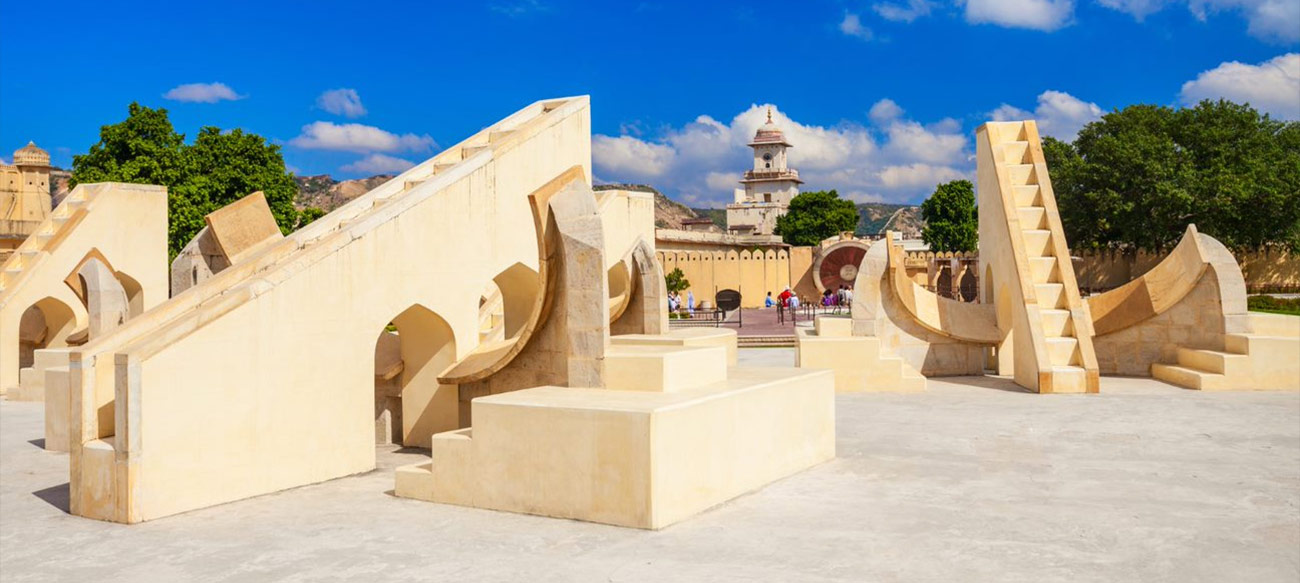
22. The Jantar Mantar, Jaipur
The Jantar Mantar monument is situated in Jaipur, Rajasthan. It was built by the Rajput king Sawai Jai Singh II in 1734. It is a UNESCO World Heritage site and a collection of nineteen architectural astronomical instruments. It highlights the world's largest sundial made of stone. It is located near City Palace and Hawa Mahal. Visitors can experience the observation of astronomical positions with their naked eye. The observatory is an example of the Ptolemaic positional astronomy and was declared a national monument in 1948.
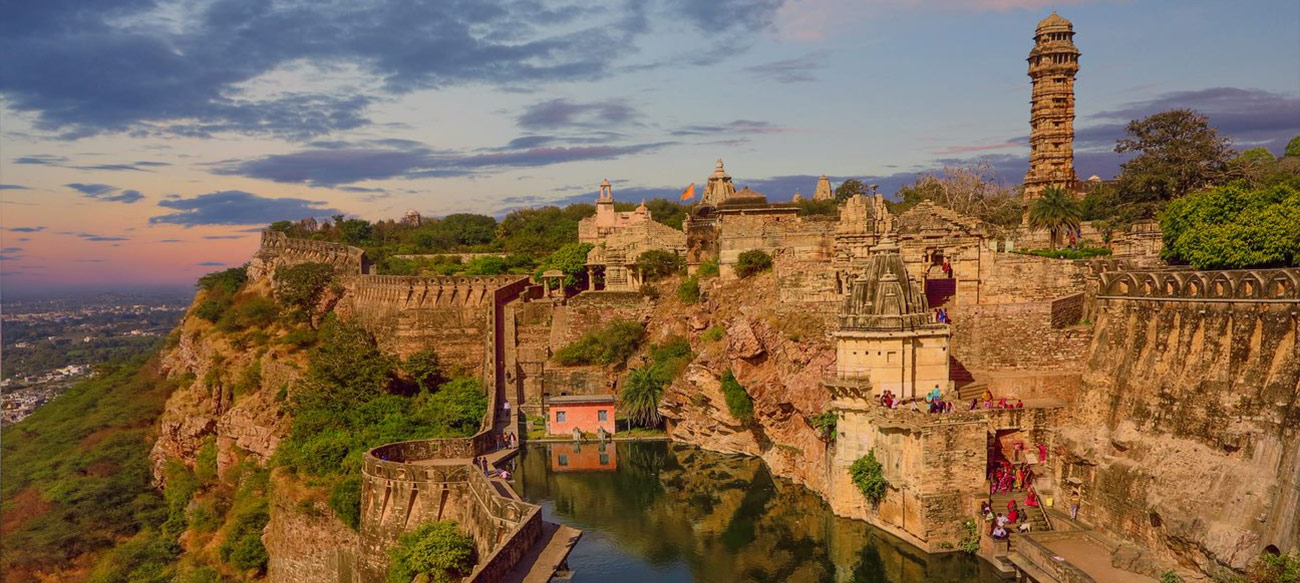
23. Hill Forts of Rajasthan
The most famous six Hill Forts of Rajasthan spread in northern India, grouped together as a designated UNESCO World Heritage Site. The forts are primarily based in the Aravalli Range and were built between the periods of 5th to 18th centuries CE by several Rajput kings of different empires. These six forts are:
1. Chittor Fort at Chittorgarh
2. Amer Fort at Jaipur
3. Kumbhalgarh Fort at Kumbhalgarh
4. Ranthambore Fort at Sawai Madhopur
5. Jaisalmer Fort at Jaisalmer
6. Gagron Fort at Jhalawar
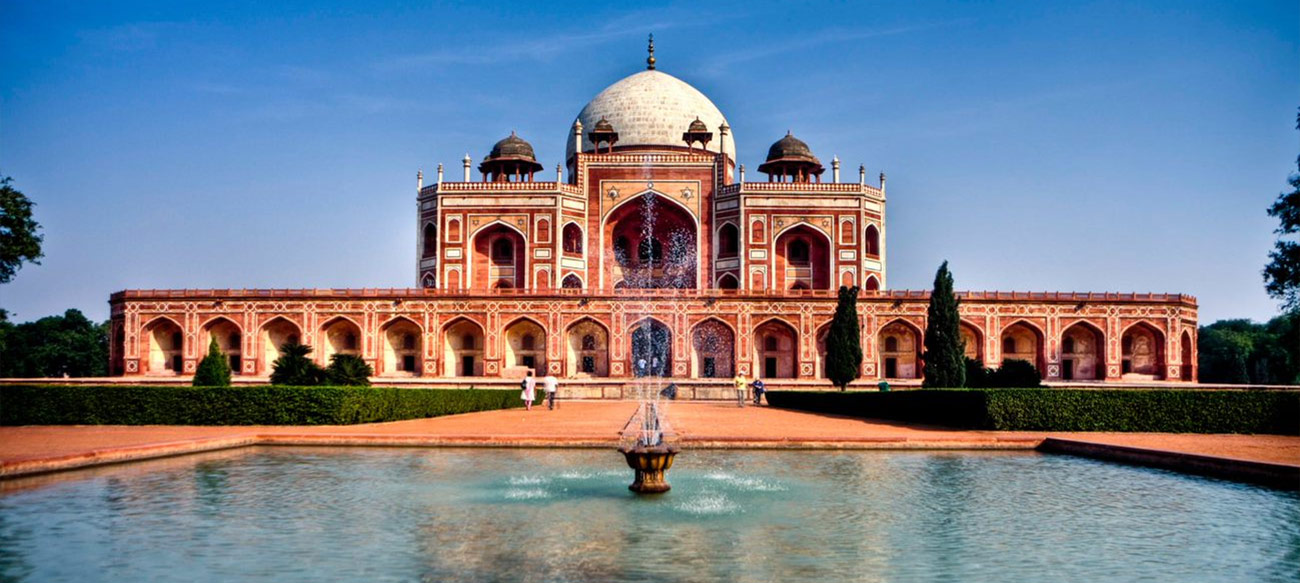
24. Humayun's Tomb: An Architectural Gem
It is the tomb of Mughal emperor Humayun located in Nizamuddin East, Delhi. It is considered as first garden-tomb of the Indian subcontinent. The complex includes the main tomb of the Humayun, the graves of Bega Begum, Hamida Begum, and Dara Shikoh (great-great-grandson of Humayun). The tomb of Humayun was built by the orders of Humayun's first wife Bega Begum. the architect of the tomb was Mirak Mirza Ghiyas ( a Persian architect).
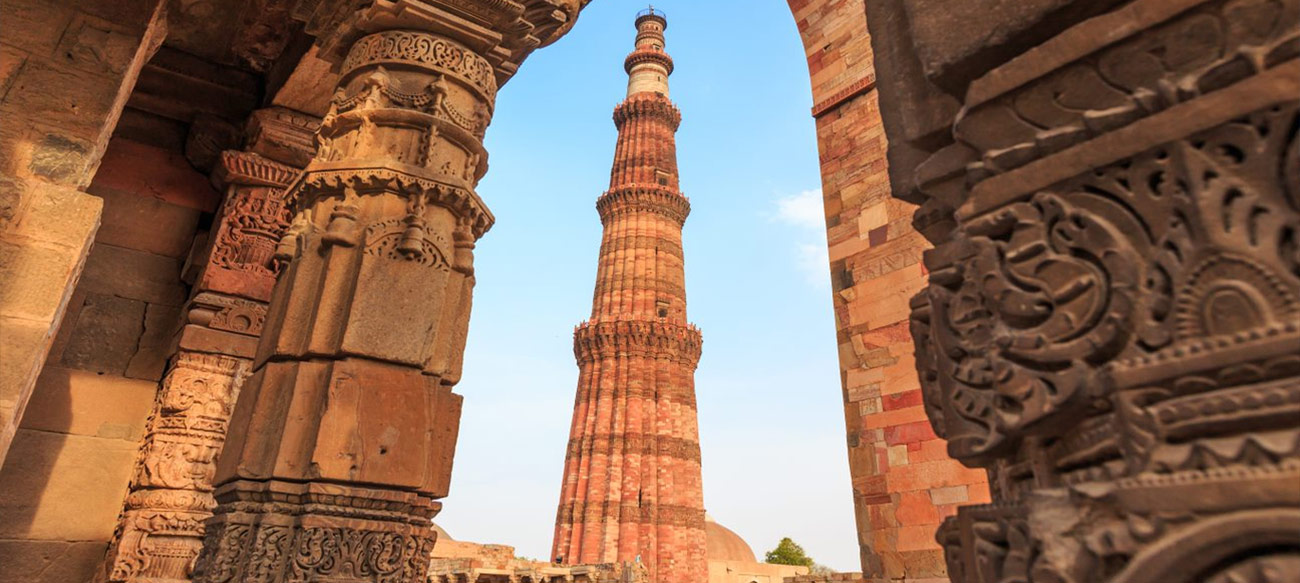
25. Qutub Minar: A Towering Marvel
The Qutub complex is a collection of monuments and buildings at Mehrauli in Delhi. This complex was built on the ruins of Lal Kot. It consists of 27 temples of Hindu and Jain religions. Apart from these temples, it has Alai Darwaza, Qutub Minar, Quwwat-ul-Islam mosque, an iron pillar, Tombs, Alai Minar of Khalji, and other monuments. It is also famous for its annual 'Qutub Festival', which held in November–December. One can enjoy the performances of various artists, musicians, and dancers for three days.

26. Red Fort: A Majestic Abode
Red Fort is a historic fort built by fifth Mughal emperor Shah Jahan in 1639. It got it's name from its massive enclosing walls of red sandstone. Major structures of this fort are Lahori gate, Delhi gate, Diwan-i-aam, Nahr-i-Bihisht (a stream of paradise), Mumtaz Mahal, Diwan-i-Khas, Hammam, Baoli, Moti Masjid, Hira Mahal, princes quarter, and Hayat Baksh Bagh. On the Independence day of India (15th August) the prime minister hoists the Indian flag at the main gate of the red fort and give his speech to the nation.
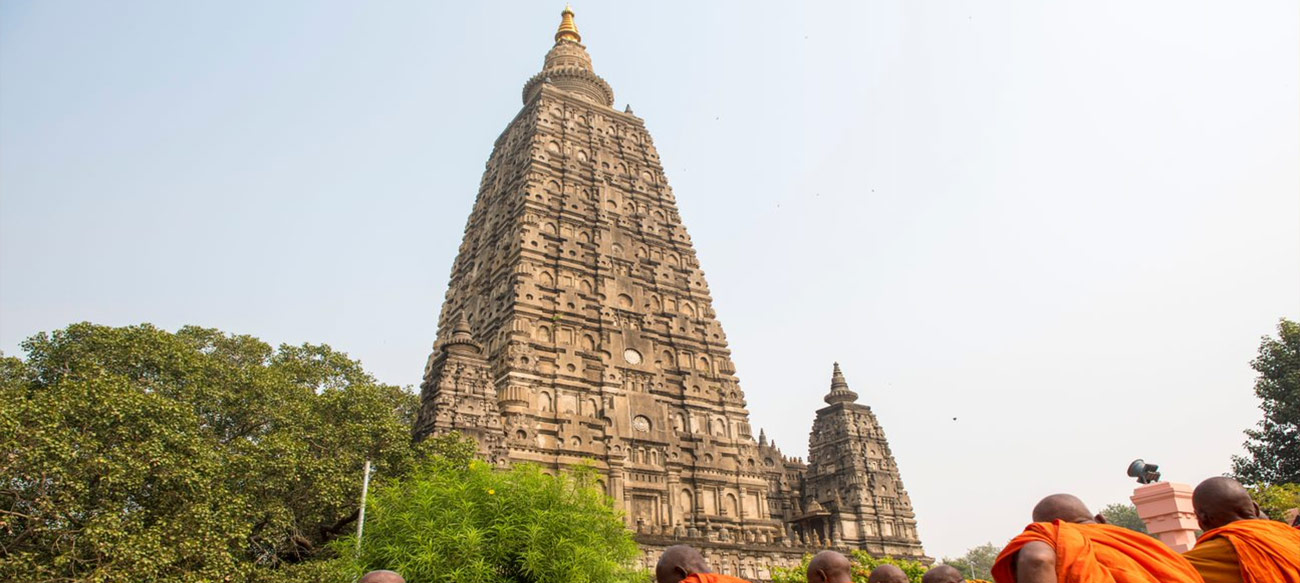
27. Mahabodhi Temple Complex, Bodh Gaya
For Buddhists, Bodh Gaya is the most sacred of sacred sites, for it is here the Buddha attained enlightenment under the Bodhi tree. The present tree is a successor of the original tree. Beneath the tree is the Vajrasana, the Diamond Throne, which marks the place where the Buddha meditated. The Mahabodhi Temple, which is nearby, was originally built in the century and has since been damaged and restored several times. Huen Tsang, who visited Bodh Gaya in AD 635 writes that he saw 700 images of the Enlightened One. There is also a massive Dharma Chakra, the Animalesh Lochan Chaitya and the Lotus Tank in the midst of which is a statue of the Buddha protected by a cobra.

28. Mountain Railways of India
Welcome to the breathtaking world of Mountain Railways of India! Nestled amidst the majestic peaks of the Himalayas and the Western Ghats, these picturesque railways are a testament to human engineering marvels and a gateway to exploring the natural wonders of India. In this article, we will embark on an exciting journey through the heart of the mountains, uncovering the rich history, unforgettable experiences, and remarkable destinations offered by these iconic railways.
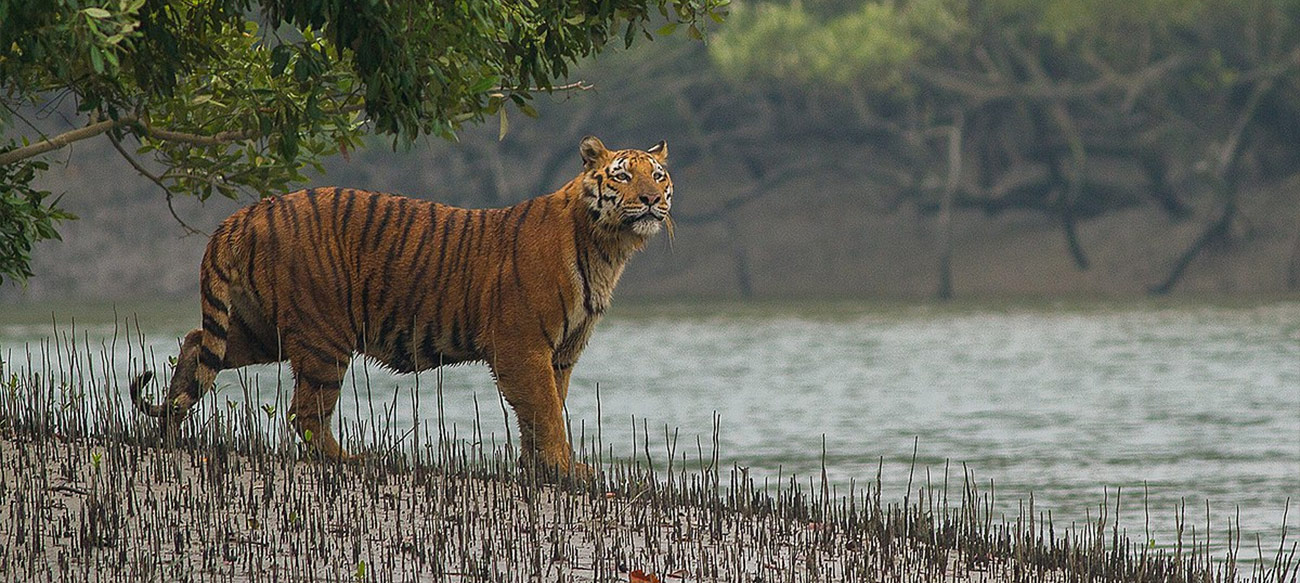
29. Sundarbans National Park: Where Wilderness Meets the Sea
The delta of the River Ganga is the large st in the world, and the Sundarbans, the vast mangrove swamp situated in this delta, is now a national park and Project Tiger Reserve, with the largest single population of tigers in the country. It is also the closest to a major city-Kolkata is only 70 kilometers away. The area demonstrates the amazing adaptability of the tiger. Fascinating life forms-including salt-water crocodiles and turtles inhabit the swamp. Chital and wild pigs are easily sighted.

30. Sun Temple, Konark
This temple, dedicated to the sun god Surya, was built in AD 1238 by King Narasimha Deva of the Ganga dynasty during the golden age of Orissan art and architecture. The profusely carved temple was conceived as a chariot. Twenty-four giant wheels symbolize the division of time; seven horses draw the chariot and the three images of Surya receive the rays of the sun at dawn, noon and sunset. Though the main temple tower has fallen, the audience hail stands proof of the magnificent scale on which the temple was originally executed. Every aspect of life has been carved on the temple and it has erotic images as exuberant as Khajuraho. The Konark temple, also known as the Black Pagoda, took twelve years to build, with 1200 masons and sculptors working on the site.
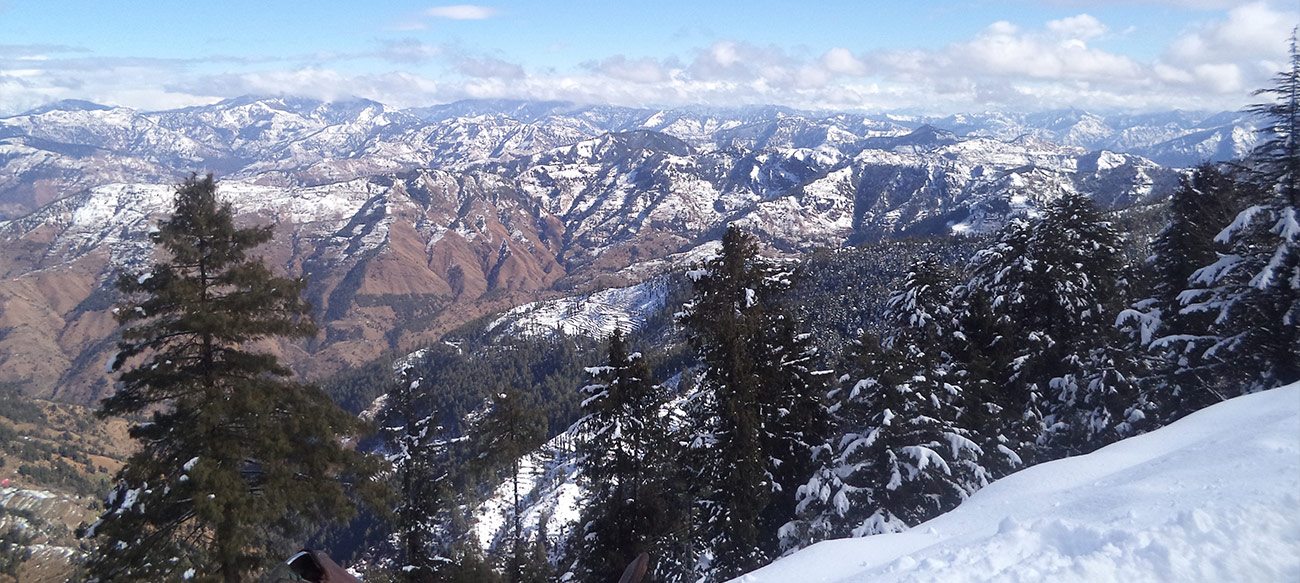
31. Great Himalayan National Park Conservation Area
The Great Himalayan National Park (GHNP), is one of the national parks of North India. It is located in Kullu region of Himachal Pradesh. It is spread over an area of 1,171 km2. The park was established in 1984 and at an altitude of between 1500 and 6000 m. The Great Himalayan National Park is a habitat of more than 375 fauna species which includes around 31 mammals, 182 birds, 3 reptiles, 10 amphibians, 11 annelids, 16 mollusks, and 129 insects. Any sort of hunting is not permitted in this park. The Great Himalayan National Park was added in June 2014 to the UNESCO list of World Heritage Sites.

32. Kaziranga National Park: A Wildlife Haven
The wildlife of Kaziranga National Park (221 kilometers from Guwahati) is abundant and visible. The park is bordered on one side by the great Brahmaputra River and on the other by the Guwahati-Jorhat highway Kaziranga is the last stronghold of the great Indian one-horned rhinoceros. Water buffalo and small herds of swamp deer dot the grassy meadows and swamps, ospreys, fishing eagles and harriers course the skies, and red jungle fowl abound. Wild elephants are also seen often.
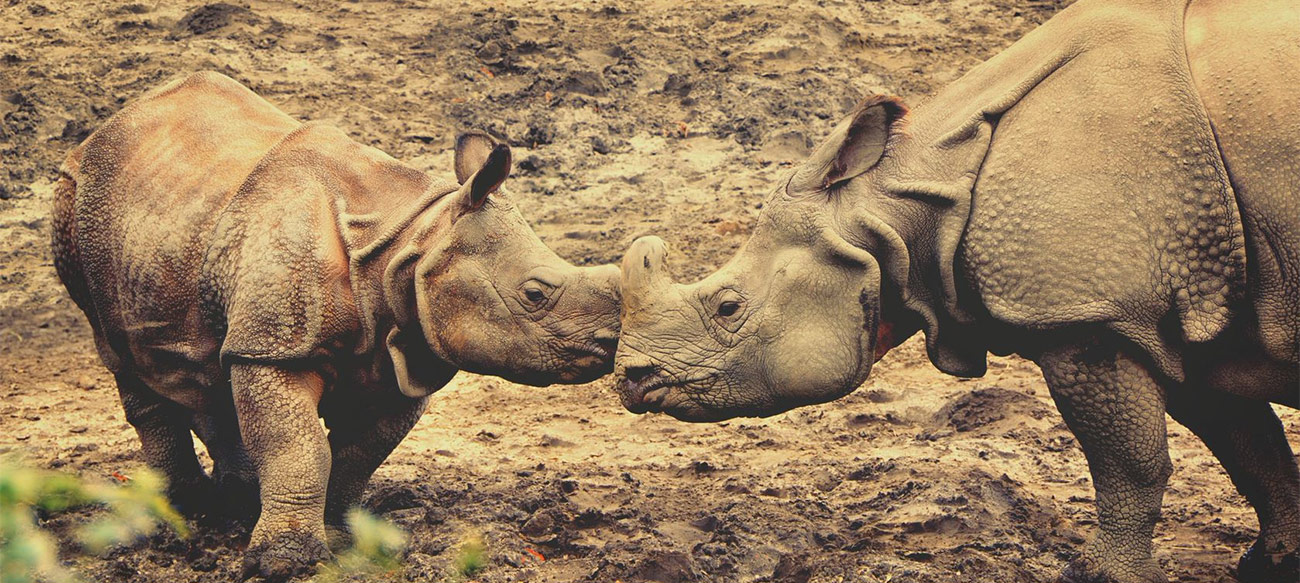
33. Manas Wildlife Sanctuary
The Manas sanctuary is situated in a lush green tropical monsoon jungle, up against the Bhutan border, 176 kilometers from Guwahati. The reserve is named after the Manas River, which flows through it and is the only known habitat of the unique and beautiful golden langur (Presbytis geek. Manas has a large population of tigers, wild buffalo and elephants, and its colorful birdlife ranges from the endangered great Indian hornbill to the tiny scarlet minivet. Sloths, barking deer, wild pig, and sambar are regularly sighted. Rhino and gaur (the world's largest wild ox) also inhabit the jungle, which harbors a spectacular insect life.
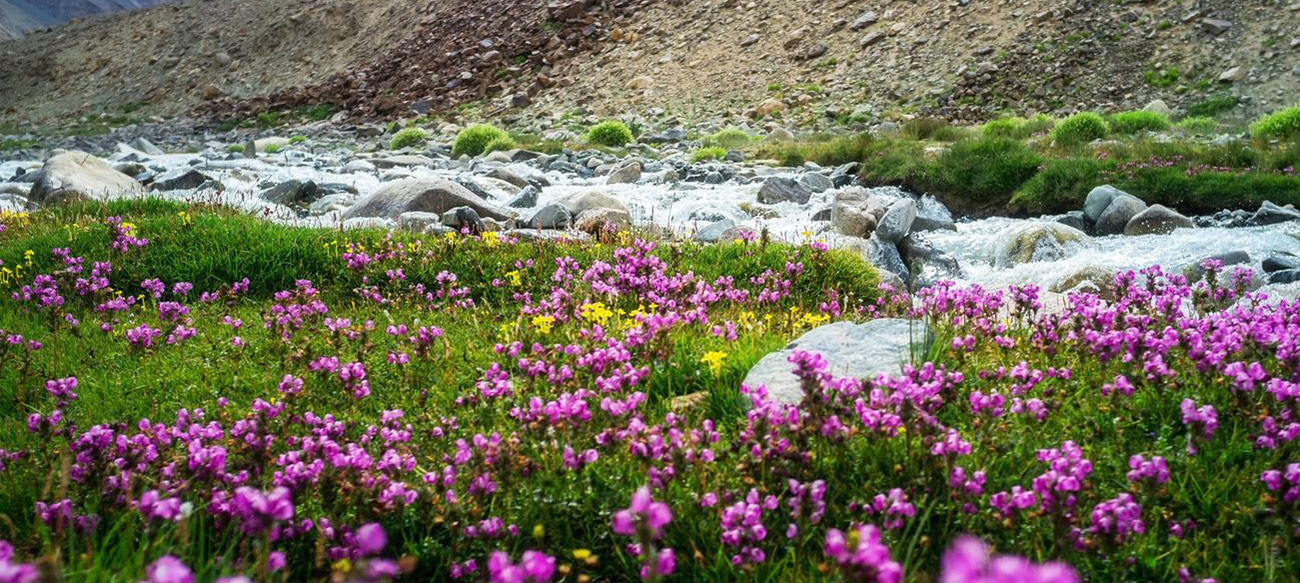
34. Nanda Devi National Park: A Sanctuary for Nature
Welcome to Nanda Devi National Park, a pristine gem hidden amidst the mighty Himalayas. This majestic park, located in the state of Uttarakhand, India, is a UNESCO World Heritage Site and a Biosphere Reserve, known for its exceptional natural beauty and ecological significance. In this article, we will delve into the wonders of Nanda Devi National Park, exploring its unique flora and fauna, the captivating landscapes, and the spiritual allure it holds for pilgrims and nature enthusiasts alike.
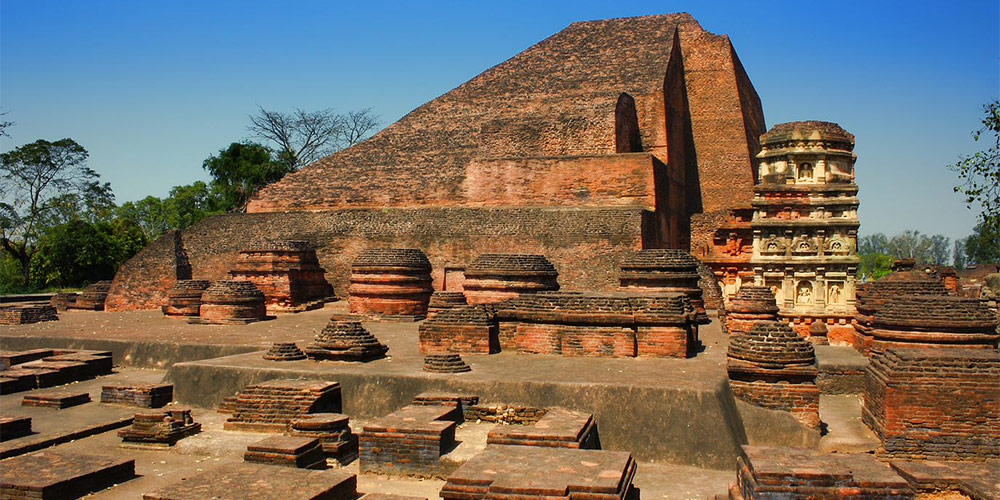
35. Nalanda Mahavihara: Unraveling the Ancient Seat of Learning
Nalanda Mahavihara, also known as Nalanda University or simply Nalanda, is an extraordinary archaeological site located in the Indian state of Bihar. It holds a pivotal place in history as one of the most renowned ancient centers of learning in the world. This article takes you on a journey to uncover the wonders of Nalanda Mahavihara, exploring its significance, architecture, and the wisdom it encapsulates.
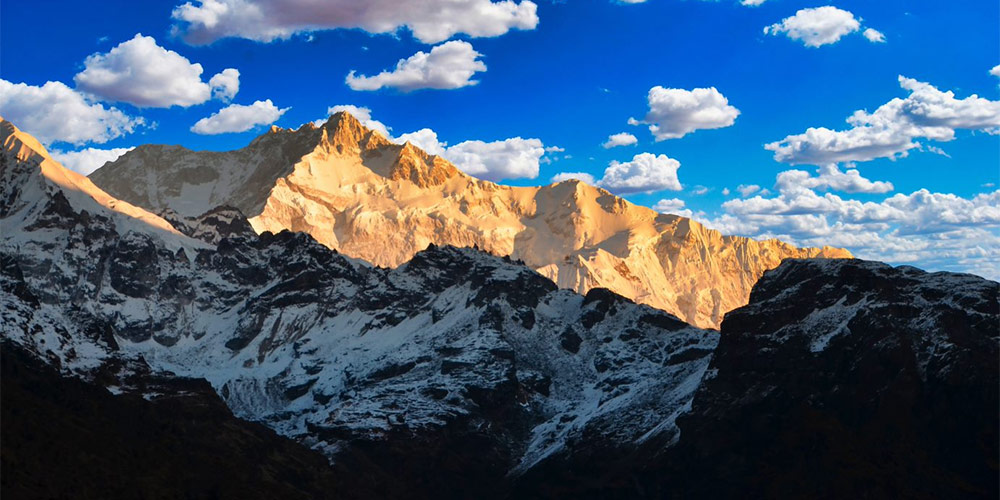
36. Kanchenjunga National Park: A Himalayan Wonderland
Nestled in the lap of the mighty Himalayas, Kanchenjunga National Park is a haven for nature enthusiasts, adventure seekers, and spiritual travelers. The park is named after the third-highest mountain in the world, Mount Kanchenjunga, which stands tall at 8,586 meters, dominating the landscape with its majestic presence. This article is your ultimate guide to discovering the wonders of Kanchenjunga National Park, from its breathtaking beauty to its rich cultural heritage and adventurous offerings.
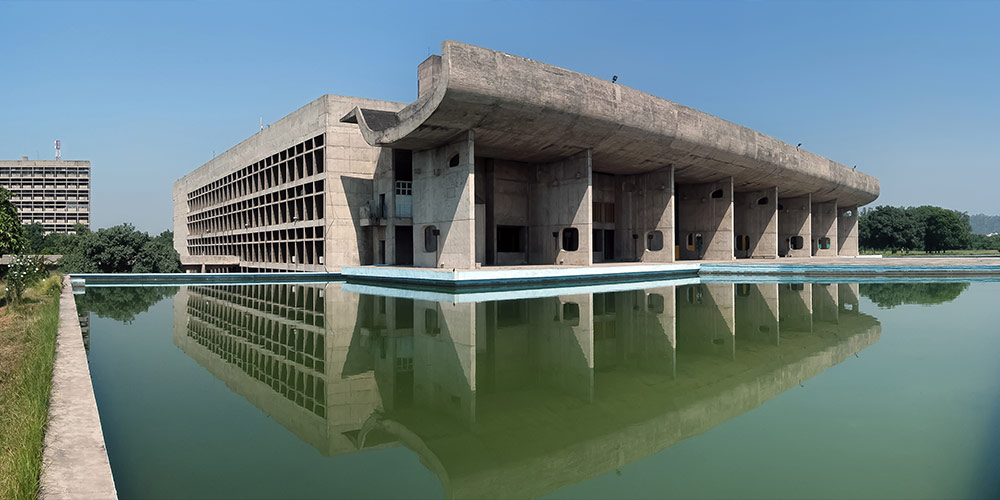
37. Capitol Complex: An Architectural Marvel of India
The Capitol Complex in Chandigarh, India, stands as a testament to the brilliance of architecture and urban planning. Designed by the renowned Swiss-French architect Le Corbusier, this complex is a symbol of modernity, democracy, and cultural heritage. In this article, we will explore the fascinating history, architectural marvels, and significance of the Capitol Complex in Chandigarh.
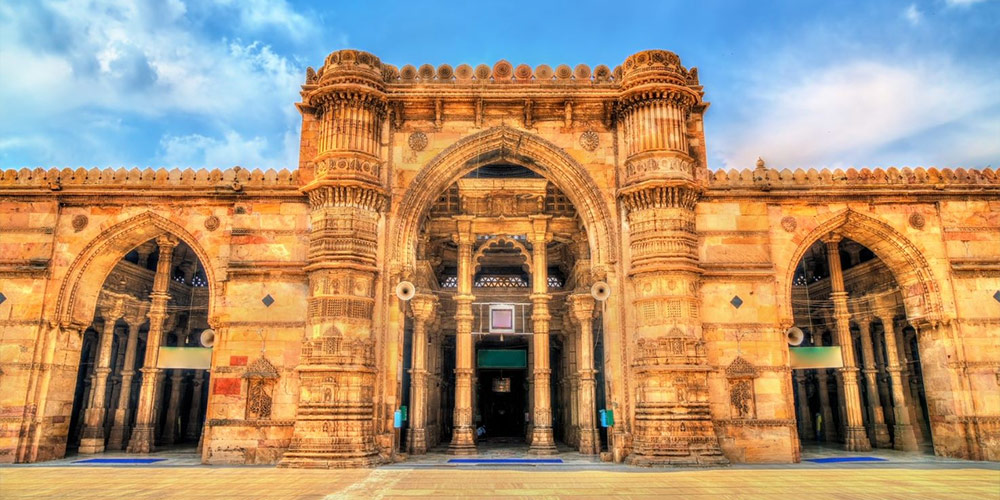
38. The Historic City of Ahmedabad
Ahmedabad, a city steeped in history and culture, is a vibrant metropolis located in the western state of Gujarat, India. With its rich heritage, architectural marvels, and thriving economy, Ahmedabad has carved its place as one of India's most important cities. In this article, we will take a journey through the fascinating history, cultural significance, and modern-day charm of the historic city of Ahmedabad.

39. The Pink City - Jaipur
Jaipur, fondly known as "The Pink City," is a city that exudes grandeur, history, and vibrant colors. Located in the Indian state of Rajasthan, Jaipur is a mesmerizing blend of ancient traditions and modern aspirations. Its unique name is derived from the terracotta pink hue that adorns many of its historical buildings, giving the city an aura of elegance and charm. With its splendid architecture, bustling bazaars, and warm hospitality, Jaipur beckons travelers from around the world to immerse themselves in its rich heritage. Let's embark on a captivating journey through the bylanes of Jaipur and explore the treasures it holds.
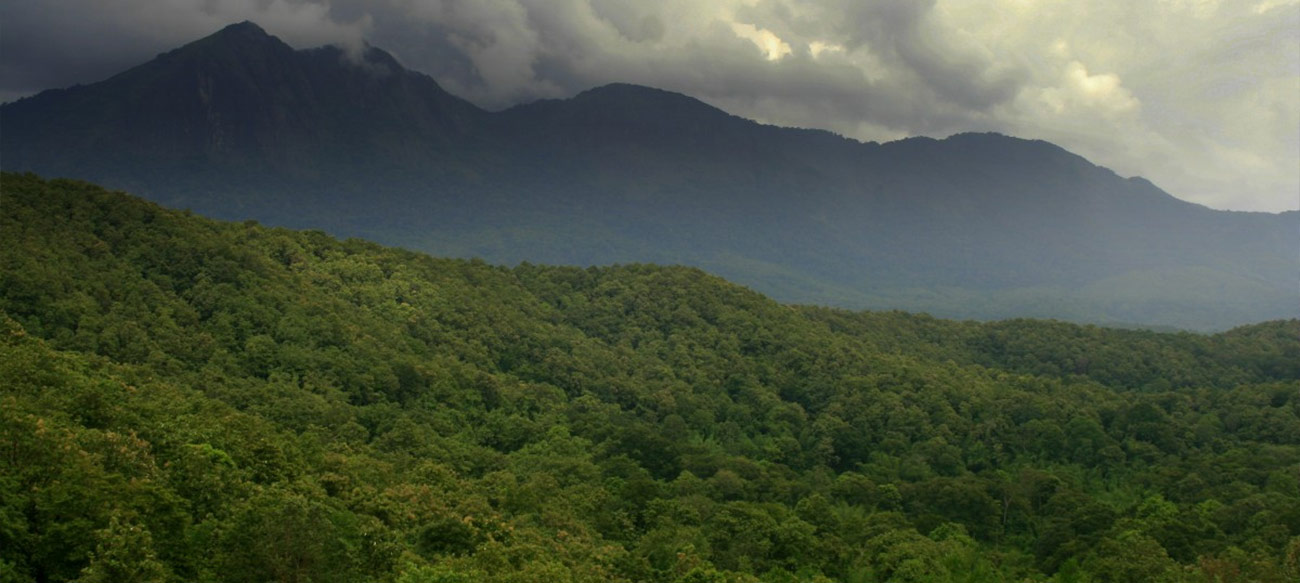
40. Western Ghats: Nature's Abode
The Western Ghats is a mountain range that runs parallel to the western coast of the Indian peninsula. It runs from north to south along the western edge of the Deccan Plateau. It separates the Deccan Plateau from a narrow coastal plain, called Konkan, Overall 29 properties including national parks, wildlife sanctuaries, and reserve forests were selected as world heritage sites. Out of these 29 sites – 20 in Kerala, 5 in Tamil Nadu, and four in Maharashtra.
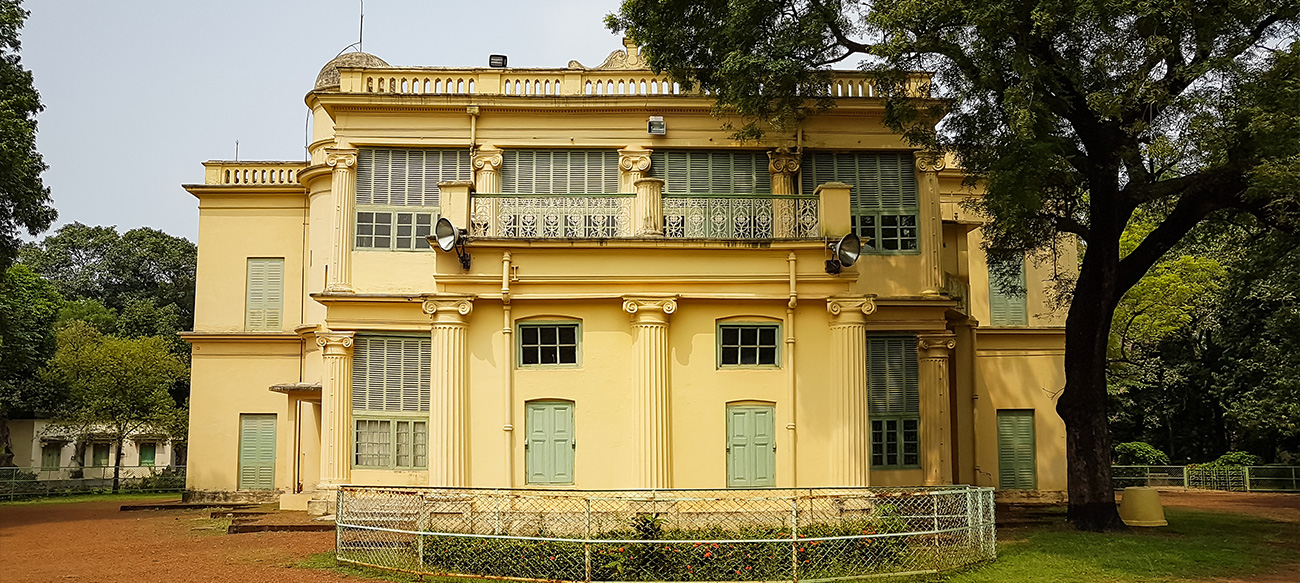
41. Santiniketan: Tagore's Abode of Art and Education
Nestled in the heart of West Bengal, India, Santiniketan stands as a testament to the enduring legacy of Rabindranath Tagore. This idyllic town, often referred to as Tagore's abode of art and education, is a place where creativity, culture, and nature intertwine harmoniously. In this article, we will embark on a journey to explore the enchanting world of Santiniketan, delving into its rich history, unique educational philosophy, architectural marvels, vibrant festivals, and its profound impact on Indian art and culture.
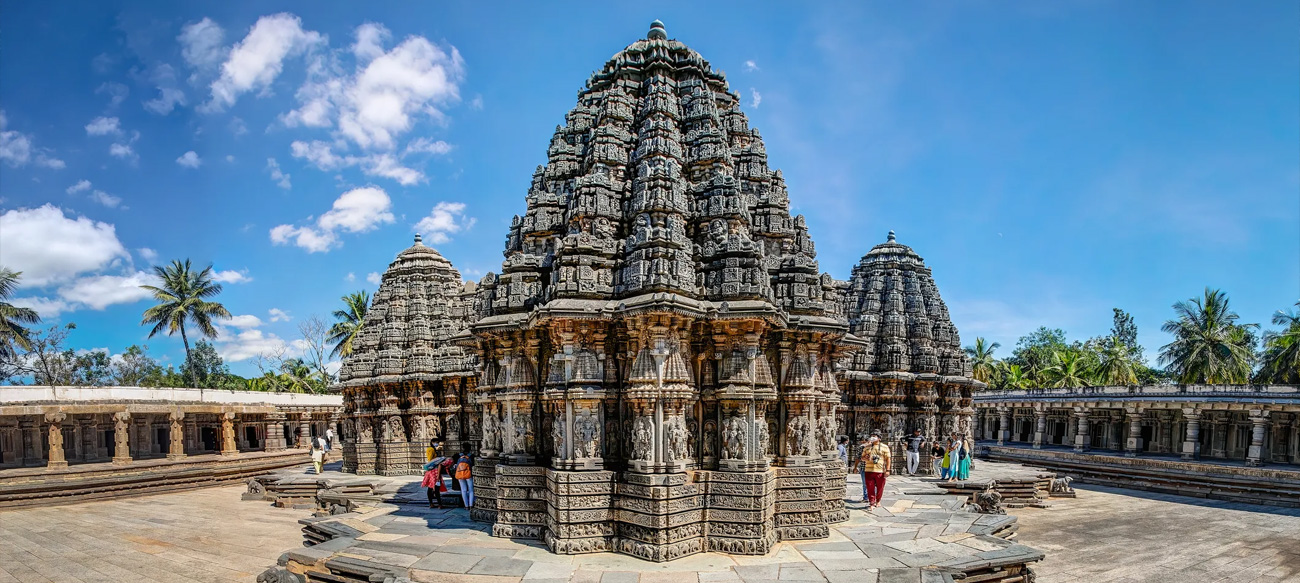
42. Sacred Ensembles of the Hoysalas: Masters of Temple Architecture
The Hoysala dynasty, which ruled over parts of present-day Karnataka, India, during the 11th to 14th centuries, left an indelible mark on history with their exquisite temple architecture. These sacred ensembles, adorned with intricate carvings and stunning design, are a testament to the artistic and architectural prowess of the Hoysalas. In this article, we will embark on a journey to explore the marvels of the Hoysala temples and their lasting legacy.